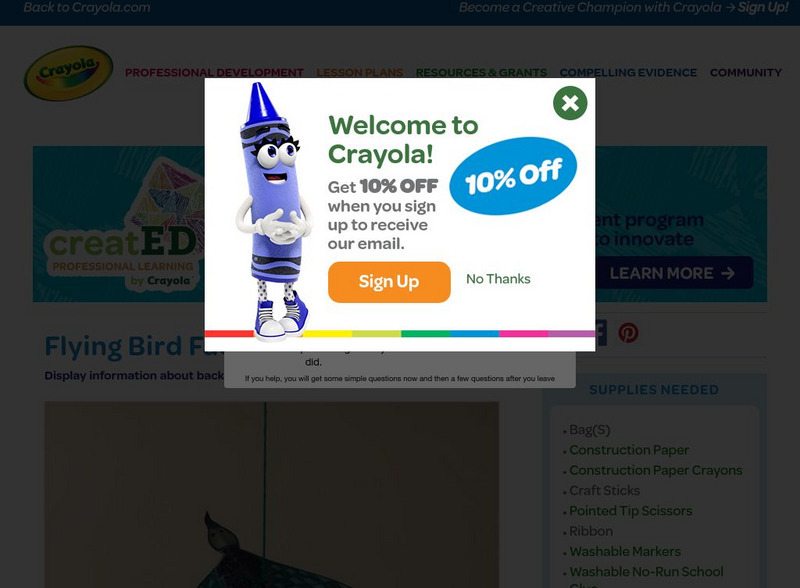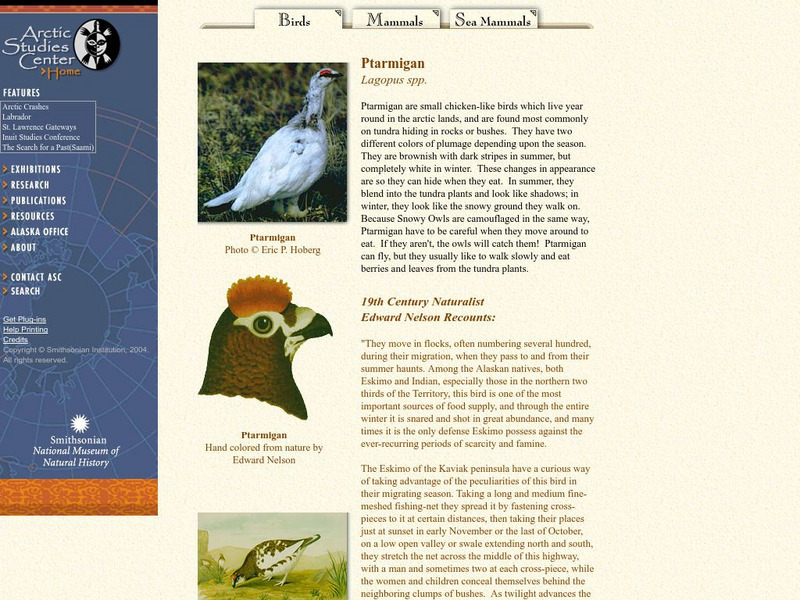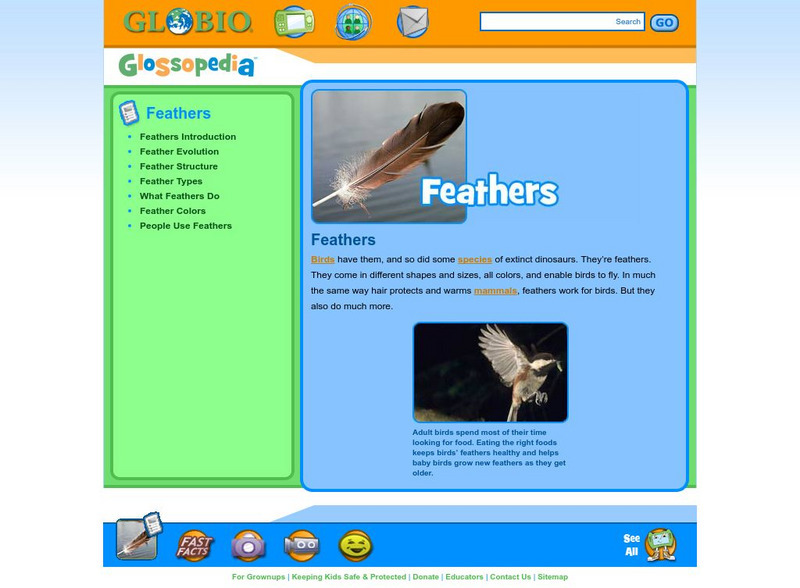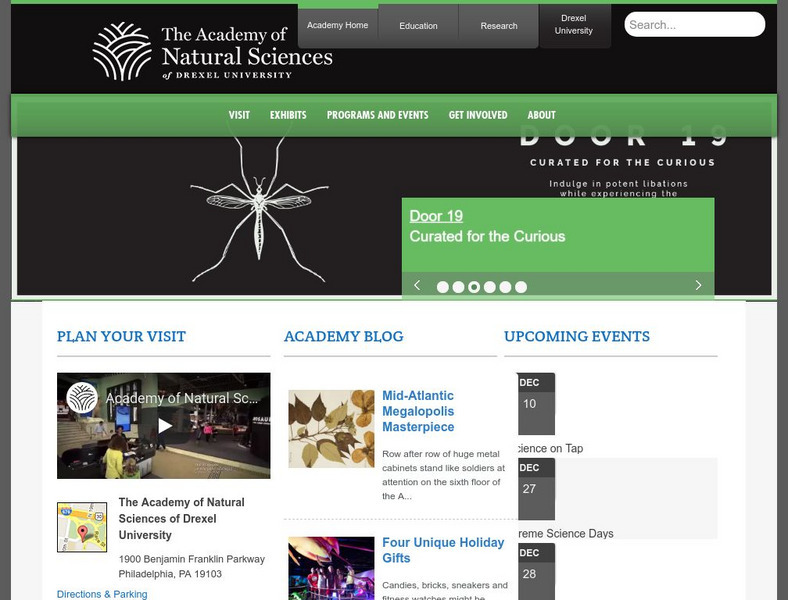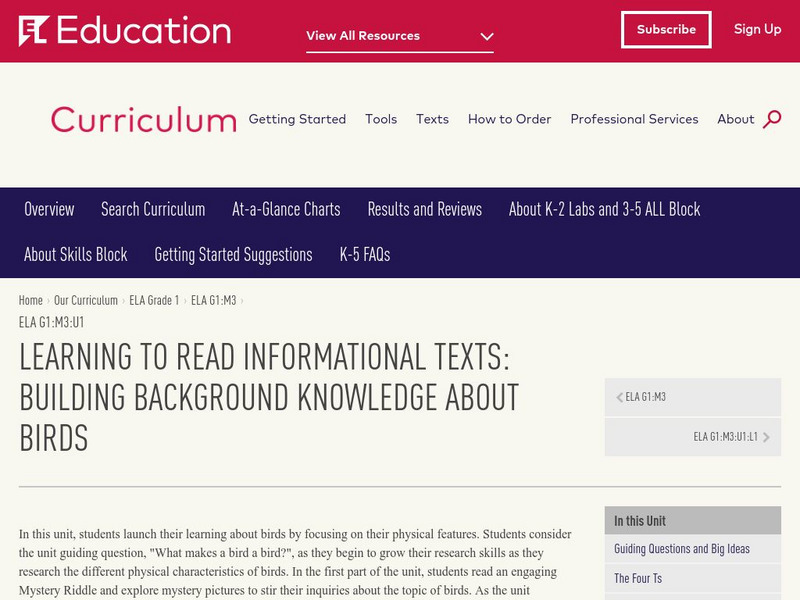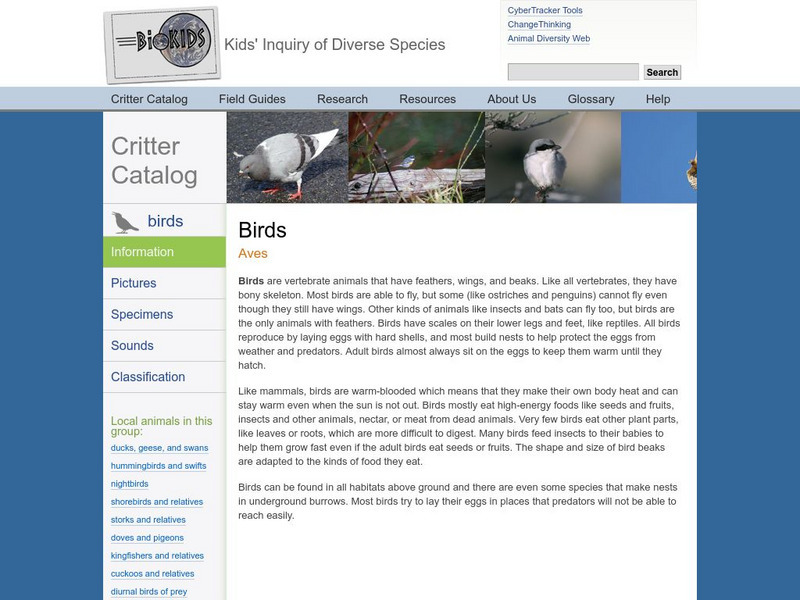DOGO Media
Dogo News: Scrunchies May Save Birds From Fiercest Predator
Read about a wearable device that may help prevent birds from being attacked and killed by cats. Includes video.
Crayola
Crayola: Flying Bird Fact Finds (Lesson Plan)
In this lesson plan, younger young scholars wrap up a bird unit by making a bird mobile and then write facts on their display.
Cornell Lab of Ornithology
Cornell Lab of Ornithology: All About Birds
One of the great attractions of this site is the ability to listen to the birds. Each bird is categorized with a picture, description, its cry, conservation status and "Cool Facts." There are tips for attracting birds as well as...
Other
Cockatiel.com: Cockatiel
Everything that you could possibly want to know about cockatiels is located on this site. You can order books or even join a mailing list on this site.
Cornell Lab of Ornithology
Cornell Lab of Ornithology: How to Id Birds
This thorough site describes how you can identify birds by examining their silhouette, field marks, posture, size, flight pattern, and habitat.
Smithsonian Institution
Smithsonian National Zoo
Here is the National Zoological Park right at our fingertips. Students will find many things to explore at this colorful and engaging site. Any study of animals will have a successful start here. Chances are students can catch their...
Books in the Classroom
Carol Hurst's Children's Literature Site: Bird Watch: A Book of Poetry
This site is on the book "Bird Watch" by Jane Yolen. It includes a review of the book, a listing of things to notice and talk about, activities related to the book, other related books, and links to other resources.
Other
Science4 Us: Animals
In online and offline activities, students broaden their understanding of animals by learning to identify and classify animals into six categories: mammals, birds, fish, amphibians, reptiles, and invertebrates.
Smithsonian Institution
Smithsonian Learning Lab: Looking at Bird Beaks
Use this activity as an introduction to adaptations. Students will view video clips of birds and formulate their own observations and explanations for the different types of bird beaks and how they are used.
Cornell Lab of Ornithology
Cornell Lab of Ornithology: Nest Watch: Nest Monitoring Manual [Pdf]
NestWatch is a citizen science project where the average person can assist scientists in observing and cataloguing bird populations to track how successful they are at nesting and reproducing. This 36-page package provides information...
Unite for Literacy
Unite for Literacy: Animals: Beautiful Birds
Look at all the wonderful birds there are in the world. Includes audio narration in 15 additional languages with text in English.
Smithsonian Institution
National Museum of Natural History: Ptarmigan
This Smithsonian website has a brief, but thorough, article on the Ptarmigan. It also includes pictures and an extensive quote from 19th Century naturalist Edward Nelson.
Globio
Glossopedia: Feathers
Birds have them, and so did some species of extinct dinosaurs. They're feathers. They come in different shapes and sizes, all colors, and they enable birds to fly. Lots of information can be found in this article.
Enchanted Learning
Enchanted Learning: Birds
This site from Enchanted Learning can answer your questions about birds. What type of scientist studies birds? What is the fastest running bird? Which bird lays the largest birds' eggs? Come and find out the answer to these questions and...
Natural History Museum
The Natural History Museum, London, England
Great site providing a "Quickindex" to find various resources. Also included are links to more information on this museum.
Other
The Academy of Natural Sciences
This site describes the museum. It shows the viewer what is currently on exhibit, interesting facts, and many links to other exhibits.
Sea World Parks & Entertainment
Sea World: Animal Information Database
Sea World's site featuring a variety of information about their animals, as well as general animal information. Includes "Animal Bytes," a list of animals with some of their characteristics. Also includes some games and teacher resources.
Better Lesson
Better Lesson: Birds Help Their Young Survive (Bald Eagles)
Birds protect their young in some cool ways! See how our national bird cares for its chicks. Students will read a National Geographic article about Eagles becoming extinct, and will watch a video on Iowa Bald Eagle cameras. Students will...
EL Education
El Education: Learning to Read Informational Texts: Building Background
In this comprehensive unit, students launch their learning about birds by using informational texts. As students read these texts, they build background knowledge and develop their skills as readers of informational texts. Included are...
Utah Education Network
Uen: Trb 4:5 Investigation 9 Bird Study
Learn about specific bird characteristics and become more aware of the ecosystems that support each bird.
Utah Education Network
Uen: Nhmu: Birds Will Be Birds
Analyze the physical characteristics of 12 different birds and consider how this enables them to survive in their individual habitats.
Utah Education Network
Uen: Nhmu: Bird Watching 101
Learn the basics of bird watching, finding and interpreting bird clues, and attracting birds to a particular location.
University of Michigan
University of Michigan, Critter Catalog: Birds
A very comprehensive website that defines birds in general and then examines the various species of birds found in southeast Michigan. Look up a specific bird and find a description, pictures, sound clips, and classification information.
PBS
Pbs Learning Media: How Animals Care for Their Young
In this interactive lesson, students learn that animals take care of their young in many of the same ways the adults in their lives take care of them. Students watch videos from NATURE and engage in a variety of activities to check...



